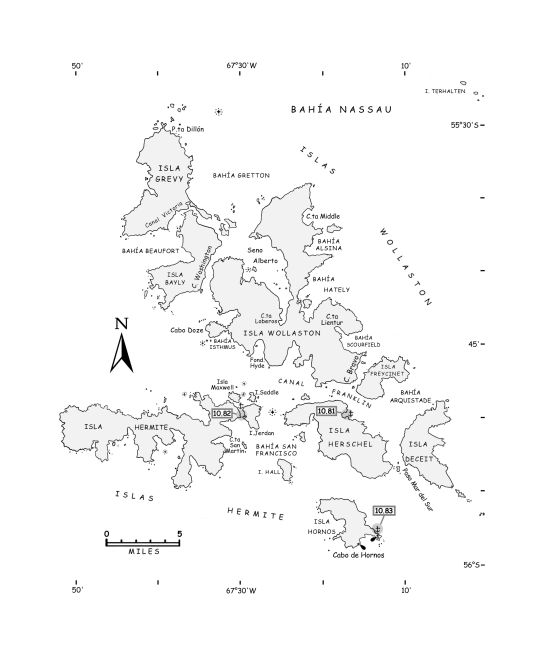
|
|
|
|
7. Cabo de Hornos Rivers of ink tell the tale of Cabo de Hornos, The Horn, The Cape, all in capital letters. Silent witness of tragedies, victories and illusions. Modern boats, strong rigging and weather forecast help present-day sailors to round the infamous rock in relative tranquillity, especially jumping off from Tierra del Fuego. It is not such a big achievement any more. But let us not forget that the way down here is long and tough, thousands of miles of rough waters, contrary and shifting winds, faraway harbours. Far from the Trades and their easy routes and following winds. One prepares to the sight of Cabo de Hornos day by day, until the black rock becomes a kind of familiar presence. The Cape is not particularly scenic, the black cliff like millions of similar ones. However, all lies in its peculiar position and in the deep meaning that rocky pyramid hides. This barren and windswept rock is one of the highest symbols of man's challenge to the unknown, his struggle versus Nature, his search for himself. For further information, refer to INSIGHTS: Cabo de Hornos Islas Wollaston and Hermite The South American continent ends with two archipelagos, the Wollaston and the Hermite, both S of Bahía Nassau. Isla Grevy, Bayly, Wollaston and Freycinet form the first, while Isla Hermite, Herschel, Deceit and Hornos the second. The Low Countries, on the wake of the achievements of their explorers Schouten and Le Maire, decided to create a fleet of 11 ships, crewed by 1,600 men and armed with 300 guns. Their aim was to conquer Peru to stop the flow of wealth streaming to Spain from the overseas colonies. Bad weather forced the expedition to seek shelter between the islands south of Bahía Nassau. One of these was named after the Commander in Chief of the expedition, Jacobus L'Hermite, sailing on the Admiral vessel Amsterdam. Hermite died in Callao and his fleet was lost around Batavia. Islas Wollaston was named between 1829 and 1831 by the British Captain Henry Foster to commemorate the British scholar Williams Hyde Wollaston (1766-1826). The native name of the Wollaston was Yachkusín, or "the place of Islands", while Isla Hermite was Samajani. |
|
|